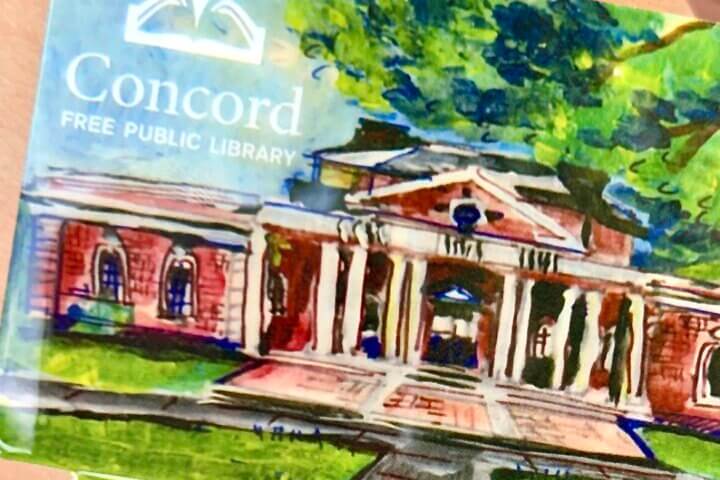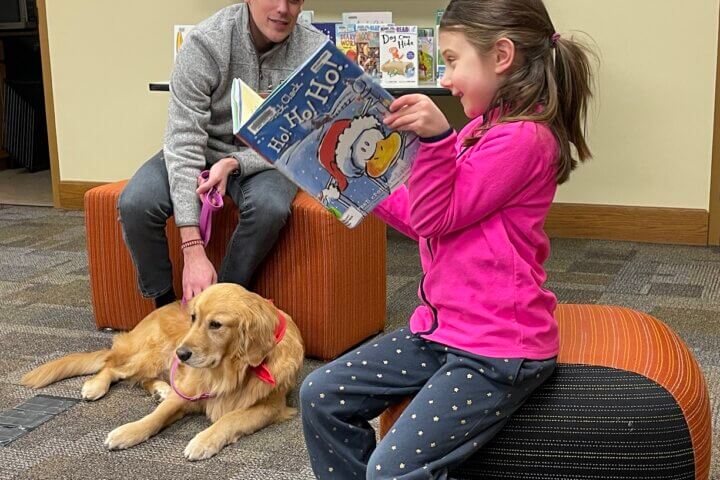Autumn is upon us with its peculiar promise of change and melancholy, and the feeling that something normally hidden from sight is a little less impenetrable as the leaves fall around us. And of course, Hallowe’en is coming, which in Concord with its historical roots of revolution and transcendentalism is especially atmospheric. If you need some books that match the mysterious, macabre mood of fall, horror is a flexible genre that allows for all kinds of reading choices. As well as providing thrills, its themes can also be an early harbinger of our culture’s preoccupations: Environmental disaster? Medical malpractice? Decaying relationships? Zombie despots? Here’s a range of reads that will take you from cozy to chilling in the time it takes to switch to your winter wardrobe.
The September House by Carissa Orlando (Penguin Random) is a real estate horror novel with a shrewd grasp on modern preoccupations. How much would you be willing to put up with in order to hang onto your Victorian dream house if every September the walls bled and past owners screamed through the month? One family finds out who has the stuff to confront their deepest fears and still renovate.
Man Made Monsters (Levine Querido) is a debut collection of stories by Andrea L. Rogers, a Cherokee author. Published as a young adult collection, it already has cult classic status. Over 200 years, a Cherokee family experiences all kinds of supernatural and historical horrors, with strong women coming to the rescue every time.
A work of historical fiction, Dreamland Burning by Jennifer Latham (Little, Brown) centers on the Tulsa Massacre of 1921, but presents a contemporary perspective when a young Oklahoma woman must solve the mystery of whose skeleton is buried on her family’s property. A terrific confrontation of a shameful episode in American history, but with a nifty view into the past that humanizes our struggle to understand the past.
Grady Hendrix is writing some of the best comic horror around as his books address some of our modern anxieties with the driest of humor. His early novel Horrorstör (Quirk Books) is the tale of a haunted IKEA. Remember when you last got lost in a store with no idea of what to do or where to go? This is that nightmare.
The Once and Future Witches by Alix E. Harrow (Redhook) is a fantasy of New England sorcery where three nineteenth-century sisters and suffragettes draw on their latent powers to advance the cause of women but unleash forces that may burn the world down. A critique of progressive political methods or a call to arms, it’s riveting.
My Heart is a Chainsaw by Stephen Graham Jones (Gallery/Saga Press) is the first in a VERY bloody trilogy about a heroine for the ages who defies the Last Girl Standing trope by drawing on her deep knowledge of slasher films and her Native American cultural identity and customs.
Muriel Sparks was a master at knowing what not to write, and in her Memento Mori, nothing worse seems to occur than a telephone ringing and a voice saying, “Remember you must die” to the unsuspecting. So why do I always come away from reading it feeling as if I’ve witnessed an epic battle between life and death, good and evil, love and hate? Horror at its most spare and most believable.
Truly Devious by Maureen Johnson (Katherine Tegan Books), is a YA series with classic tropes of boarding schools, dark New England woods, and mysteries that can’t be entirely explained. Snarky quips and keen characterizations by the ever-clever Johnson have created in Stevie Bell an anxious, precocious, self-critical yet coolly confident detective for the ages.
Thinking of precocious kids, this is the right time of year to read aloud Ray Bradbury’s Something Wicked This Way Comes, a classic about overcoming your worst fears that will leave anyone with a healthy suspicion of strange carnivals that come to town. The film with Jason Robards is good to watch together, too. It’s always fun to get a young reader hooked on a series, so how about Welcome to Dead House by R.L. Stine, the book that started the “Goosebumps” craze. (Of course, there’s a film of that coming out too.) For tweens who don’t mind being spooked by kids in peril, there’s anything by the late, great William Sleator, who cheerfully mashed together science and dystopian genres and critiqued American culture in books that never failed to entertain. Your child will always remember The House of Stairs, The Green Futures of Tycho, Interstellar Pig or Among the Dolls, many out of print but available at your library.
For younger readers there are some picture books to introduce Hallowe’en as a time to experiment with being deliciously scared and then sweetly comforted.
Los Gatos Black on Halloween by Marisa Montes, illustrated by Yuyi Morales (Squarefish) is a bilingual poem about what monsters get up to on October 31st, with Caldecott winner Morales’ gorgeous illustrations. Apples and Pumpkins by Anne Rockwell (Aladdin) is a nice way to explain how Hallowe’en and autumn are linked by traditions that are not necessarily terrifying. The Light Inside by Dan Misdea (Penguin Workshop) is a wordless picture book where a pumpkin-headed child chases after a black cat who has stolen their mouse toy. Perhaps the cat just wants some attention? Happy Halloweenie by Katie Vernon (Little Simon) is a board book where a hot dog must choose his best look for Hallowe’en. Ghosts in the House! By Kazuno Kohara (Squarefish) in brilliant orange and black colors, features a young witch who knows how to wash those ghosts into sheets and towels. This Book is Banned by Raj Haldar, illustrated by Julia Patton (Sourcebooks) is a hilarious picture book about what happens when horses ban unicorns, hippos ban giraffes and kids who fight over birthday cake at parties end up banning everything. This is a good choice to remind us all that the scariest moments come in life when groups of people make terrible decisions.
Make sure to stop by the Concord Free Public Library to see the Hallowe’en displays, and to say “Boo!” to your local bookstores.




